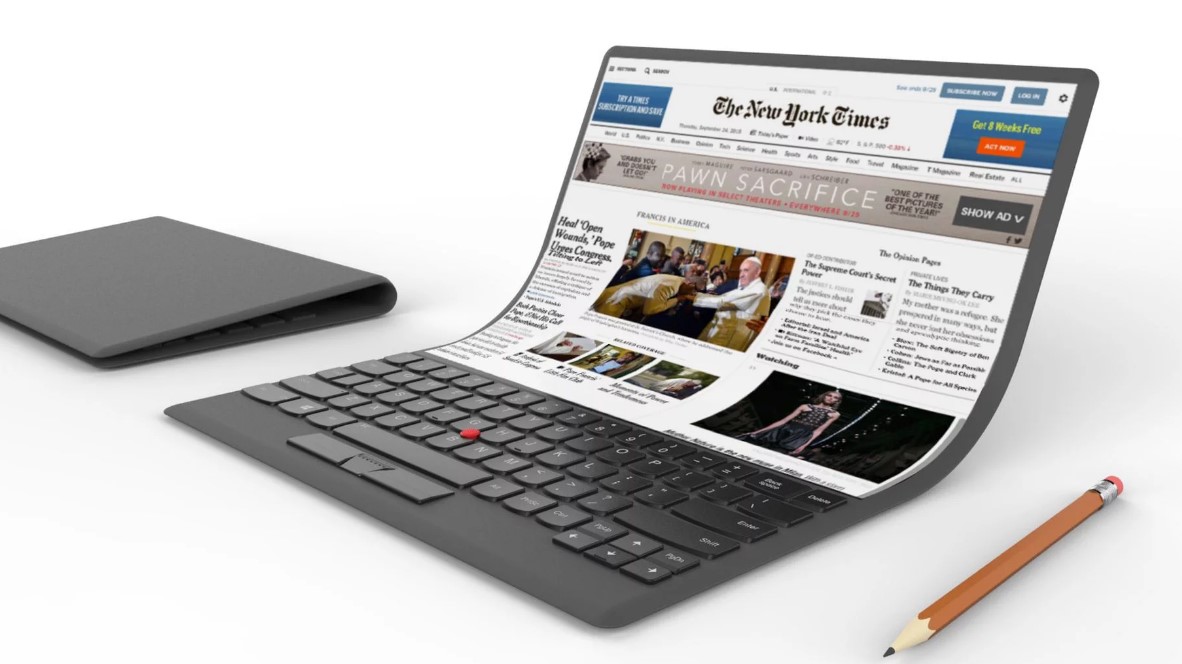
I PC Windows 10 on ARM potrebbero rivoluzionare il form-factor dei portatili attuali e a dirlo è la stessa Qualcomm.
Qualcomm immagina nuovi form-factor
Dopo l’annuncio del primo vero processore per PC, Qualcomm è tornata a parlare dei PC Windows on ARM tramite il direttore della divisone prodotti. Qualcomm ha scommesso molto sulla partnership con Microsoft, e sappiamo già che non è rimasta con le mani in mano, ma sta già lavorando ad altre novità. In un’intervista a TheIndianExpress, Miguel Nunes ha rivelato che secondo lui il binomio processori ARM e Windows 10, grazie al lavoro e alla fantasia dei produttori, potrebbe portare a una rivoluzione dei form-factor dei device, grazie alla riduzione delle dimensioni del 30 %, frutto della medesima differenza tra il SoC Qualcomm rispetto a quello Intel.
You will see a transition of form factors and one of the advantages Qualcomm brings to the industry is the amount of integrations. If you look at Snapdragon 835/850 platforms compared to an Intel [x86] processor, we are about 30 times smaller from the design standpoint. So you can imagine if you reduce the design by 30 per cent we can start to do a lot of interesting things with the form factor. I think you will see innovation in form factors and in the future as well… dual-screens and all kinds of form factors because we were able to enable that
Secondo Nunes, potrebbe proprio essere questo fattore a determinare la diffusione e il successo dei dispositivi dual-screen, molto in voga ultimamente. Questi ultimi non sostituirebbero gli attuali form-factor, ma potrebbero rappresentarne l’evoluzione.
I think one of the key things for different form factors is that you have to get the user experience right. Obviously, that takes time. I don’t think one will replace another form factor and neither will you see the coexistence of different form factors depending on what people are trying to do; depending on the value of those of form factors. I think you will see an evolution
Sulla stessa lunghezza d’onda, Navkendar Singh, capo della ricerca prodotti Qualcomm, sostiene che i dispositivi con doppio display potrebbero essere la risposta all’attuale decadenza del mercato dei PC, donando nuove esperienze d’uso agli utenti.
Dual screen devices should become a trend in the stagnant PC Market which is in a desperate need of disruption and innovation. It allows for a better experience, more content consumption, and creation and can help PCs differentiate from smartphone onslaught with their bigger, better screens. Form factor, mobility and performance will drive new use cases and experiences for these devices and thus present a strong opportunity for the next set of growth for all market players
Nunes è cosciente della situazione attuale, spiegando come queste idee siano in cantiere da almeno cinque anni, riferendosi anche ai fallimenti delle precedenti esperienze con Microsoft su Windows RT e Windows Mobile.
This has been something in the works for at least four to five years. We have been monitoring the PC segment and how the computing market is working. Qualcomm has also worked closely with Microsoft on different programmes Windows RT which we kind of forget about or the Windows Phone programme
Riprende Singh, spiegando come l’architettura ARM dovrebbe vedere un forte interesse dei produttori in futuro, in vista di una forte espansione dei device convertibili, grazie alle caratteristiche che rendono questa piattaforma potente ed efficiente.
The processor game will see a strong focus of attention by all OEMs as the user expectations from a PC perspective is shifting towards powerful, intelligent, performance, long battery devices. And processors will be the key in delivering these expectations
Pensate che l’architettura ARM e Windows siano il futuro dei PC? Secondo voi, potranno avere successo? Ditecelo nei commenti.
Articolo di Windows Blog Italia
Fonte | WindowsLatest